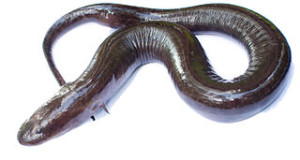Salamanders and newts, often overlooked by pet keepers, zoos and environmentalists alike, are getting some much-needed exposure this year. Led by the Partnership for Amphibian and Reptile Conservation, a consortium of environmental groups has designated 2014 as the Year of the Salamander. I’m very pleased, as past efforts, including the Year of the Snake and the Year of the Lizard, have done much to advance reptile conservation.
Even among my Bronx Zoo colleagues, I was considered somewhat strange when I began writing a book on newt and salamander natural history and captive care some 17 years ago. But I have been very lucky, salamander-wise. Perhaps because so few people were interested, many fascinating opportunities came my way. Whether crossing the USA and Japan in search of my favorite species or caring for those in my home collection – several of which are now aged 25 to 35 – I’ve never tired of learning about them, and remain as passionate today as I was in childhood.
Salamander Central
Salamander enthusiasts based in the USA are quite fortunate, as more species live here than anywhere else on earth. In fact, the southern Appalachian Mountains, a salamander hotspot, are home to 10% of the world’s known species. And the sheer diversity of their sizes, lifestyles and behaviors is beyond belief – colorless cave-dwellers that never see the light of day, yard-long eel-like species armed with sharp teeth, tiny lichen-colored rock dwellers, colorful beauties, terrestrial giants large enough to raid mouse nests and so many more.
My zoo-keeper and hobbyist friends in other countries are astounded that those living in the epicenter of salamander diversity do not devote more of our efforts to these amazing creatures. I’ve written about some of our species in other articles…please post below and I’ll send links.
Year of the Salamander Activities
The Year of the Salamander effort is spearheaded by Partners in Amphibian and Reptile Conservation (PARC), and was preceded the Year of the Turtle, Snake and Lizard. This year, PARC will be joined by the Center for Conservation Biology, the Association of Reptile and Amphibian Veterinarians, Amphibian Ark, and other notables. In addition to field research and captive breeding programs, public education will be a major component of each group’s activities.
I’m happy to see that input from interested non-professionals will be solicited. This is an all-too-rare step, despite the fact that professionals with financial resources cannot begin to address the conservation needs of the world’s threatened amphibians.
Salamander Populations Plummeting Worldwide
Frog extinctions have been very much in the spotlight in recent years. Fueled by emerging diseases (please see below) that have exacerbated the threats posed by habitat loss and other long-standing concerns, frog declines have been documented around the globe.
Salamanders, which are usually harder to find and study (after all, none advertise their presence by croaking!), are likely in just as much trouble as frogs. In fact, the IUCN classifies 49.8% of the world’s salamanders as threatened or endangered, as compared to 31.6% of the world’s frogs! Considering that salamanders are so poorly studied, the conservation picture could actually be far bleaker than the IUCN’s frightening statistics indicate. Hopefully, the Year of the Salamander effort will divert much needed interest and funds to salamander conservation.
Specific Threats
The future of the world’s salamanders and newts is put in jeopardy by many of the same problems that afflict frogs – habitat loss, road mortality during the breeding season, pollution, invasive species (especially fish) and others. Unique threats also exist – for example, Tiger Salamanders, classified as endangered in some US states, are legally used as fish bait in others (please see article below)!
While the devastating effects of Chytrid and Ranavirus infections on frog populations are well known, related salamander studies are in short supply. However, in 2013, a new strain of Chytrid was found to be killing Fire Salamanders in Europe…I fear that this is merely the tip of the iceberg.
Help and Input Needed
Please check out my salamander conservation articles, some of which are linked below, and share your thoughts and observations by posting in the comments section of this article. A book I’ve written, which addresses both natural history and captive care, may also be useful to those interested in helping these amazing amphibians.
Further Reading
Salamander larvae Still Being Used as Fish Bait in the USA
New Population of Endangered Axolotls Found…in Mexico City!
Twelve Rare US Amphibians in Need of Protection
 That Reptile Blog – Reptile, Amphibian and Exotic Pet Care and Information
That Reptile Blog – Reptile, Amphibian and Exotic Pet Care and Information





